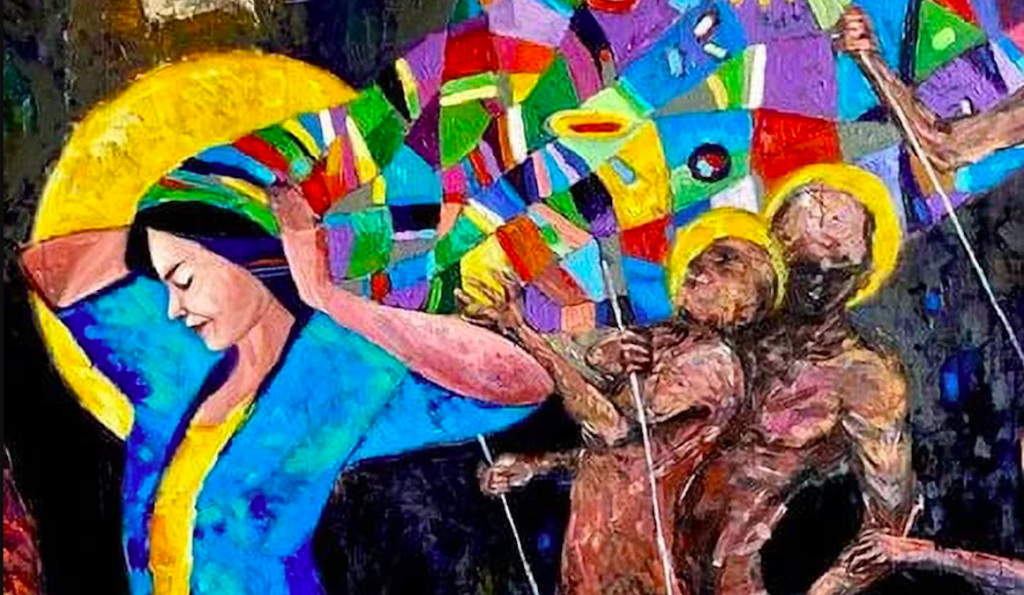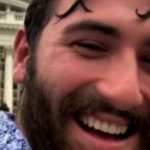Statelet of Survivors: The Making of a Semi-Autonomous Region in Northeast Syria, by Amy Austin Holmes, Oxford University Press, 272 pages, $99
The outlook for the Autonomous Administration of North and East Syria, a region also known as Rojava, does not look good. Over the last couple of years, every time I’ve spoken with an aid worker or researcher returning from the place they have told me bleak stories. Turkish drone strikes have decimated even the mid-level local leadership. Petty corruption is seeping into the ranks of the survivors. In August 2023, the notoriously corrupt militia commander Rashid Abu Khawla launched a mutiny that was put down with artillery and U.S. air support.
Rojava had been a hopeful experiment for many anti-authoritarians. The Kurdish-led rebels of the Syrian Democratic Forces (SDF) had managed not only to evict forces from Syria’s Arab nationalist government, but also to defeat various theocratic rebel factions. The SDF eventually became the U.S. military’s favored partner against the Islamic State, taking over about a third of Syria and installing a decentralized left-libertarian experiment.
The revolution seems to be more fragile than expected. “Governance? They’re meh at it,” one aid worker told me. “Insurgency? They’re really good at that.”
Statelet of Survivors, a book-length study by sociologist and former State Department advisor Amy Austin Holmes, offers a more hopeful long-term prognosis. Holmes spent significant time in Syria and has an impressive amount of data and anecdotes to show for it. (She witnessed the apocalyptic siege of Kobani from just across the border in Turkey.) Though outsiders often call the SDF “the Syrian Kurds,” Holmes focuses on the revolution’s non-Kurdish elements, which she believes are the key to its strength.
In fact, Holmes shows that the SDF is a majority non-Kurdish force. Its supporters include not only Kurds and Arabs, but also members of smaller and more vulnerable minorities: Armenian and Assyrian Christians faced a genocide by Turkish forces in 1915; a century later, the Islamic State tried to wipe out the Yazidi minority. Driven together by common threats, all of these groups have fought together under the SDF banner—hence the term “statelet of survivors.”
Holmes traces the roots of this cooperation to the Republic of Mount Ararat, a short-lived rebellion in eastern Turkey during the late 1920s. The new Republic of Turkey was moving to suppress the political and cultural autonomy that Kurds once enjoyed. Kurdish tribes, both those that had resisted and those that had collaborated in the Armenian genocide, now feared that they would meet the same fate. The Kurdish party Xoybun agreed to collaborate with the Armenian Revolutionary Federation in a desperate uprising.
The odds were stacked against the revolutionaries, and not only because Turkey was a powerful state. Neighboring regimes—the British colonial authorities in Iraq, the French colonial authorities in Syria, the Soviet Armenian Republic, and the Iranian monarchy—all feared the spread of revolutionary ideas. The French government exiled one of Xoybun’s Syrian Kurdish leaders to Madagascar. The Soviet Union lured the most famed Armenian rebel commander off of Mount Ararat and exiled him to a Siberian gulag, where he was later executed by firing squad.
Despite the republic’s short life, the experiment in Kurdish-Armenian cooperation had a lasting legacy. The taboo on intra-religious and inter-ethnic cooperation was broken. For decades to come, Turkey would be considered the great threat to both peoples’ freedom.
Perhaps the most striking aspect of Kurdish-Armenian cooperation is the Martyr Nubar Ozanyan Brigade, an SDF unit for “crypto-Armenians.” Like Jews who hid among Christian families during the Holocaust, many Armenians hid from Turkish forces among Muslim Kurdish or Arab families. A subculture grew of people who professed Islam, spoke Kurdish or Arabic, and held onto their Armenian identity. A century later, the rise of Rojava allowed them to come out of the closet.
One thing that has changed since the Republic of Mount Ararat is the role of women. The female soldiers in the SDF have captured a significant amount of romanticized, sometimes leering foreign attention. Yet some of the most significant changes for women have happened away from the front lines. Rojavan institutions give civilian women day-to-day decision-making power, including worker co-ops designed to make women financially independent from their families.
When the revolutionaries conquered a town or city, Holmes notes, “after setting up checkpoints and flying their yellow and green flags to signpost their newly gained territory, women’s shelters were often among the first institutions to be established.”
The Islamic State was not the only faction that saw women’s liberation as threatening. Local feminist Ilham Amar recalled being tortured by the Syrian government for feminist activities. She told Holmes that when the revolutionaries founded the first women’s shelter in Rojava, the Syrian secret police were so suspicious that they sent agents to “surround” the building.
The widening gyre of the Syrian civil war pulled other groups into the SDF alliance. Holmes brings to life tales from the early days of the revolution that other accounts gloss over. Kurdish vigilantes fought pro-government militias with pump-action shotguns and stole intelligence officers’ cars. The government frantically offered concessions as it melted away. An alphabet soup of rebel groups emerged, then started to congeal around the opposite poles of the Islamic State and Rojava.
Some of the SDF’s members are natural allies of the revolution, like the Dowronoye, an Assyrian political party with longstanding ties to Kurdish rebels. Others are far more unlikely partners. The Sanadid Forces, an Arab militia, is led by the prince of the powerful Shammar clan, who is suspicious of political parties and wants a return to premodern clan rule. Unlike other SDF units, the Sanadid Forces do not allow women to bear arms. Yet they have worked with the SDF from the beginning due to their common distrust of the Syrian government, the Islamic State, and Turkey.
The real challenge is what comes after the shooting stops. This part of Syria was already a poor region before the war. Holmes calls it an “internal colony,” with laws forbidding many types of economic development. The few resources that the region does possess—farms, oil fields, hydroelectric dams—have been damaged by fighting. Turkey has sealed its border, forcing North and East Syria to rely on Iraqi Kurdistan, a fickle partner, for trade. U.S. financial sanctions deter most investment in Syria.
The revolutionaries have responded with what Holmes calls “an eclectic mix” of economic theories. Ahmad Youssef, the revolution’s finance minister, told Holmes his goal was not to “exclude” the rich but to “remove the conflict” between classes. State-owned lands and abandoned property were to be turned over to collectives, while private property will be left untouched.
Yet there are clear limits to Rojava’s ability to develop. The bulk of the Autonomous Administration’s budget comes from oil, which has to be sold through smugglers, with all the opportunities for price gouging and corruption that accompanies black market trade. When the administration established a Kurdish- and Assyrian-speaking school system, the Syrian central government simply refused to recognize it, making degrees from those schools worthless outside the region.
Ironically, the revolutionaries have gained the most international recognition by performing a task no state wants to. Tens of thousands of foreign fighters from dozens of countries had joined the Islamic State at its height. Now the surviving fighters and their families are rotting away in prison camps across North and East Syria. Few outside states have gone through the trouble of tracking down, extraditing, and trying their citizens who committed war crimes in Syria. Instead, they trust Rojava—a statelet they don’t recognize—to keep the militants behind bars.
Holmes presented these findings in February 2024 at George Washington University, where she now works. An audience of researchers, journalists, activists, and interested undergrads watched Holmes go through a PowerPoint in her methodical, academic style. Ambassador William Roebuck, another former U.S. diplomat who spent time in Syria, hosted the event.
The mood was somewhat grim. An audience member, convinced that Rojava was already done for, asked whether the United States should be issuing special visas to friendly Syrians in order to avoid a repeat of the Afghan refugee crisis. I looked over at the representatives from Rojava sitting in the front row, listening to the outside world predict their imminent exile.
Roebuck offered little consolation. Nation-states are “tremendously jealous of their prerogatives of control, and easily threatened, and easily become threatening,” he said. Syria’s central government, backed by Iran and Russia, was nursing its wounds and getting ready to reassert its power over the rebellious provinces. Turkey, too, wanted to see the destruction of a movement that was linked to armed rebellions against its own authority.
I pointed out that Rojava has already outlasted the Republic of Mount Ararat, and Holmes said that the changes wrought by revolution are not so easily undone.
“One reason for the longevity,” she added, is that it’s “not just a Kurdish nationalist movement. It’s truly multiethnic, and all of the ethnic groups in the region have been able to get more breathing space.”
The post How the Threat of Genocide Sparked a Multi-Ethnic Revolution in Syria appeared first on Reason.com.






